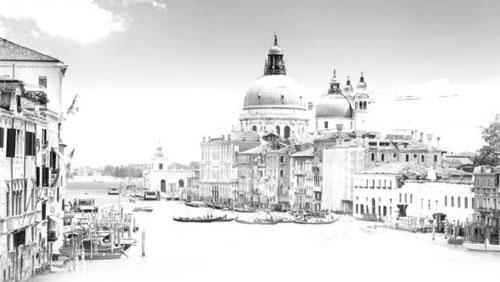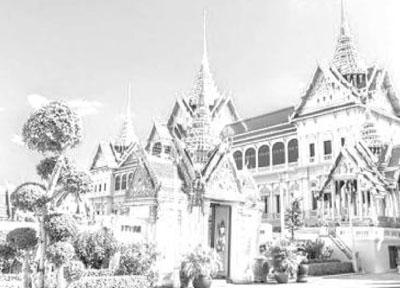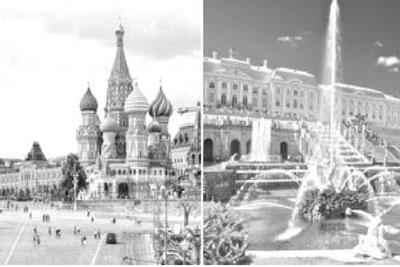水城不止威尼斯



威尼斯也许是世界上最著名的水城。一想到运河,脑海中很难不浮现这座意大利城市蜿蜒的水道、优雅的拱桥、突突作响的水上巴士和身着条纹衫的船夫的身影。水城的名气也为威尼斯带来了一些问题——每天有超过六万名游客如潮水般淹没这座城市的狭小街道。威尼斯作为旅游目的地的火爆人气使联合国教科文组织(UNESCO)及一些团体都不禁为它的未来感到担忧。2009年,威尼斯的当地居民为这座城市举行了一次模拟葬礼,同时也是對旅游业的一种抗议。现在,随着大量的游船带来更多游客,人们又有了新的担心——这些大型船只甚至可能会迫使威尼斯的建筑和基础设施作出让步。
如果你想畅游风景如画的运河,又想避开威尼斯的汹涌人潮,那么你很走运——因为人类自美索不达米亚文明时期就已经开始使用运河了,美丽的运河几乎遍布地球的每个角落。一起来发掘威尼斯以外的水城吧!
Amsterdam, Netherlands
荷兰阿姆斯特丹
Beautiful canals probably arent the first thing you associate with[同……联系在一起] Amsterdam, but they should be—Amsterdam actually has more canals than Venice. The first canals were built in the Middle Ages, as a source of transportation[运输] and defense[防卫]. Radiating[呈辐射状发出] out from the city center, Amsterdam has four main canals. Today, you can see Amsterdams classic gabled[有山墙的] architecture[建筑] along any of the canals. In 2009, UNESCO named Amsterdams central canal ring a World Heritage[遗产] site.
提到阿姆斯特丹,美丽的运河可能不是你联想到的第一件事,但它们确实应该被想到——实际上,阿姆斯特丹的运河数量比威尼斯还要多。阿姆斯特丹的第一批运河建于中世纪,用于运输和防御。阿姆斯特丹有四条主要运河,它们从市中心呈放射状流出。今天,沿着任何一条运河,你都可以看到阿姆斯特丹的经典山墙建筑。2009年,联合国教科文组织将阿姆斯特丹的中央运河圈列为世界遗产。
Bruges, Belgium
比利时布鲁日
Just a short train ride away from Brussels lies Bruges, an old canal town in Belgiums Flemish region注1. Settled in the 13th century as a stop in the areass textile[纺织品] trade, Bruges appears like something out of a fairy-tale: small, cobblestone[鹅卵石] streets, beautiful bridges and gabled houses. With such a small-town feel, it might be hard to imagine that Bruges had a population of 200,000 in the 1500s—double that of London at the time. Bruges canals, fed by the North Sea, host a festival every four years, which includes performances by musicians and actors and lights that shine throughout the canals.
布鲁日距离布鲁塞尔只有很短的火车车程,是位于比利时弗拉芒大区的一座古色古香的运河之城。布鲁日曾是13世纪该地区纺织品贸易的中转站,整座城市就像童话里的一样:狭小的鹅卵石街道、漂亮的桥梁和山墙房屋。这种小镇的感觉令人很难想象在16世纪的时候,布鲁日的人口达到20万,是当时伦敦人口的两倍。布鲁日的运河源自北海。每四年这里都会举行以运河为主题的节日庆典,其中包括音乐和艺术表演,以及与运河交相辉映的灯光秀。
注1:弗拉芒大区是比利时弗兰德地区目前存在的行政区划名称,也是今日比利时王国下属三个大区之一。它位于比利时北部,面积13522 km2(占比利时陆地面积的44.29%)。如今它是欧洲人口密度最大的地区之一,每平方公里约有470位居民。
Stockholm, Sweden
瑞典斯德哥尔摩
Water makes up nearly one-third of Swedens capital city—built across 14 islands, Stockholm, sometimes called the “Beauty on Water,” is connected by a vast[巨大的] canal network and 57 bridges. In the winter, when the canals freeze over, locals and tourists alike take to the frozen waterways for ice skate sailing—like windsurfing[帆板运动], but with ice skates.
瑞典首都斯德哥尔摩建于14个岛上,由庞大的运河网络及57座桥相互连接。这座城市大约三分之一的面积都是水,因此有时也被称为“水上美人”。冬天,运河结冰后,当地人和游客都喜欢到冰冻的河面上玩风帆滑冰——这种运动与风帆冲浪类似,只不过脚下踩的是溜冰鞋。
Tigre, Argentina
阿根廷蒂格雷
Twenty miles from Buenos Aires sits Tigre, a town built on hundreds of tiny islands in the Paraná Delta[三角洲]. Boats run throughout the area, offering visitors a chance to see a landscape that the New York Times describes as “what Venice might have looked like before development.”Tigres remote[偏远的] location inspires a blend[混合] of adventure and relaxation[消遣] among locals and visitors alike: consider a visit to one of the areas “countries” (named after American country clubs), private spas that also offer kayaking[皮艇], horseback riding and bird watching.
蒂格雷距离布宜诺斯艾利斯20英里(32公里),是建于巴拉那三角洲数百座小岛上的一个小镇。在这里,船只到处穿行,游客们可以一睹《纽约时报》所说的“开发前的威尼斯”的风貌。蒂格雷偏安一隅的地理位置给予当地人和游客一种兼具冒险刺激和休闲放松的氛围。不妨考虑体验一下这里的“乡村”(根据美国的“乡村俱乐部”命名),以及提供划皮艇、骑马和观鸟等活动的私人水疗中心。
Bangkok, Thailand
泰国曼谷
Canals arent just for little, old European towns—modern Asian cities also included canals in their city planning. Before being drained[排水] in the 19th and throughout the 20th century to make way for paved[铺路面] roads, Bangkok had a series of[一连串的] criss-crossing[交叉的] canals. Today, a few original[最初的] canals still exist. The canals are also home to Bangkoks floating markets, which attract large crowds of tourists and locals alike.
運河并非古老欧洲小镇的专利——现代亚洲城市的规划中也采用了运河。直到19世纪该市的水被抽干,以及整个20世纪为铺设道路让步之前,曼谷曾经也有一系列纵横交错的运河。如今,曼谷仍保存着一部分原来的运河。这些运河也是吸引众多游客和当地人的曼谷水上市场的所在地。
St. Petersburg, Russia
俄罗斯圣彼得堡
St. Petersburg, Russias second largest city, stands at the meeting point of two bodies of water: the Neva River and the Baltic Sea. To help drain the swampy[沼泽的] land around St. Petersburg, the city dug a number of canals, which Peter the Great modeled after Amsterdam. Float down the Moyka canal to see the impressive Neo-Classical注2 mansions[大房子] built for the 19th-century aristocracy[贵族], or follow the Winter Canal for sights of the Winter Palace.
俄罗斯第二大城市圣彼得堡位于涅瓦河与波罗的海的交汇处。为了帮助城市周围的沼泽地排水,彼得大帝仿照阿姆斯特丹为圣彼得堡挖了很多运河。不妨乘船沿着莫伊卡运河顺流而下,欣赏令人叹为观止的、为19世纪贵族而建的新古典主义风格大宅,或者沿着冬季运河游览冬宫景点。注2:新古典主义建筑是一种建筑风格,由开始于18世纪中叶的新古典主义运动产生。新古典主义的设计一方面保留了材质、色彩的大致风格,仍然可以很强烈地感受传统的历史痕迹与浑厚的文化底蕴,同时又摒弃了过于复杂的肌理和装饰,简化了线条。
Alappuzha, Kerala, India
印度喀拉拉邦阿拉普扎
Alappuzha is a city in Indias southern district of Kerala, and its also an important gateway to the Kerala backwaters[回水区], a series of lakes and lagoons[泻湖] parallel[平行的] to the Arabian Sea. For centuries, the residents[居民] of Alappuzha and the surrounding towns would transport rice and other goods via[经由] the waterways on houseboats—today, tour operators[旅行社] let visitors experience the houseboats, some of which have been turned into luxury[奢侈] houseboats with numerous floors, balconies[阳台] and huge rooms.
阿拉普扎是印度南部喀拉拉邦地区的一个城市,也是进入喀拉拉邦回水区(拥有与阿拉伯海平行的众多湖泊与泻湖)的交通要道。长期以来,阿拉普扎和周边城镇的居民都用兼作住屋的船只经由水路运输大米和其他商品。如今,旅行社可让游客体验船屋生活,其中有些船只已被改造成有多个楼层、阳台和大房间的豪华船屋。
Copenhagen, Denmark
丹麦哥本哈根
Like St. Petersburg, Copenhagen sits on the edge of the Baltic Sea, and like St. Petersburg, Copenhagen is dotted by beautiful canals. Copenhagens most famous canal district, perhaps, is the Nyhavn, the area of town that connects Copenhagens old city center with the sea. Dug in the 1670s, the Nyhavn was once Copenhagens version of a red-light district. The famous Danish author Hans Christian Andersen also lived in the Nyhavn for almost two decades—he wrote his famous story The Princess and the Pea in his apartment at No. 20 Nyhavn. Today, the area is known for its beautiful, colored row houses and historic wooden ships.
哥本哈根與圣彼得堡一样都坐落在波罗的海边缘,并且同样拥有众多美丽的运河。哥本哈根最著名的运河区大概要数新港区,哥本哈根的老城区在这里与大海相连。开凿于17世纪70年代的新港运河曾是哥本哈根的红灯区。丹麦著名作家汉斯·克里斯蒂安·安徒生也曾在这里住了将近二十年——他在其位于新港区20号的公寓里写下了著名故事《豌豆公主》。今天,该地区以其色彩缤纷的漂亮排屋和古老木船闻名。
Taierzhuang, Shandong Province, China
中国山东省台儿庄
Taierzhuang is an ancient Chinese city that was first settled during the Han dynasty, between 206 and 220 AD, and thrived[兴旺,繁荣] as a trading hub[中心] during the Ming and Qing dynasties. In 2009, the local government invested[投资] almost $750 million to restore the area, making it a perfect destination[目的地] for tourists looking to explore one of Chinas water towns—its close distance to Beijing makes it an easy day trip. The ancient town is small, but offers visitors lovely canals, as well as traditional temples and modern museums.
台儿庄是中国的一座古城,始建于公元206年到220年之间的汉朝,到明清发展成为繁荣的贸易枢纽。2009年,当地政府投资了近7.5亿美元重建该区,使之成为有意探索中国水城的游客的一个最佳目的地——其靠近北京的地理位置也便于一日游。这座古镇不大,但有漂亮的运河以及传统寺庙和现代博物馆可供游览。

